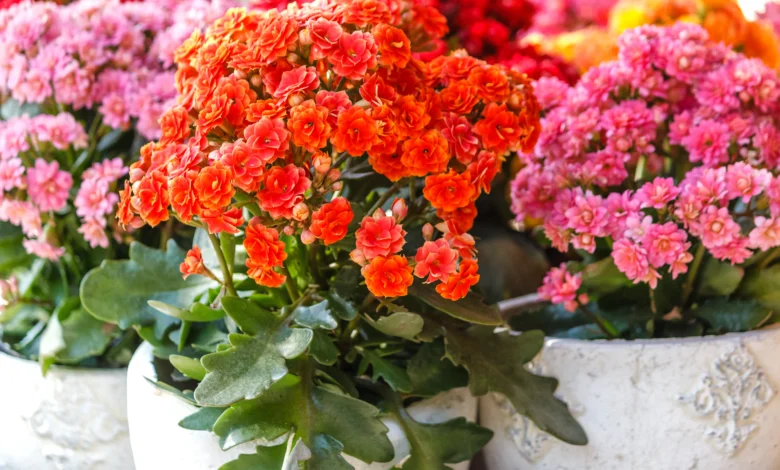Kalanchoe Plant: A Guide to Care and Cultivation

Kalanchoe plants are cherished by many for their vibrant, long-lasting blooms and easy-care nature. Native to Madagascar and tropical Africa, these succulents belong to the Crassulaceae family and are prized for their resilience and ornamental value. In this comprehensive guide, we’ll delve into the various types of Kalanchoe plants, how to care for them, propagate them, common problems you might encounter, and the benefits they offer.
Types of Kalanchoe Plants
Common Varieties
Among the most popular Kalanchoe species is Kalanchoe blossfeldiana, known for its colorful flowers that bloom in clusters. Kalanchoe tomentosa, also called Panda Plant, is recognizable by its fuzzy leaves with brownish-red markings. Kalanchoe thyrsiflora, or Paddle Plant, features paddle-shaped leaves arranged in a rosette formation.
Uncommon Varieties
Less common but equally fascinating are Kalanchoe daigremontiana, also known as Mother of Thousands, which produces tiny plantlets along the edges of its leaves. Kalanchoe luciae, or Flapjack Plant, boasts flat, pancake-like leaves that turn vibrant shades of red when exposed to sunlight.
Caring for Kalanchoe Plants
Light and Temperature Requirements
Kalanchoe plants thrive in bright, indirect light. They prefer temperatures between 60°F and 85°F (15°C to 29°C) and should be protected from drafts and extreme heat.
Watering Needs
These succulents have low water requirements and are susceptible to root rot if overwatered. Allow the soil to dry out between waterings, and water deeply but infrequently.
Soil Requirements
Well-draining soil is essential for Kalanchoe plants to prevent waterlogging. A mix of cactus or succulent potting mix with perlite or coarse sand works well.
Fertilization
Feed Kalanchoe plants with a balanced liquid fertilizer diluted to half strength during the growing season, typically spring and summer.
Propagation of Kalanchoe Plants
Propagation by Stem Cuttings
To propagate plants from stem cuttings, select a healthy stem and cut it just below a leaf node. Allow the cutting to callus for a few days before planting it in moist, well-draining soil.
Propagation by Leaf Cuttings
Leaf cuttings can also be used to propagate Kalanchoe plants. Simply remove a healthy leaf and place it on top of moist soil, pressing it down lightly. Keep the soil consistently moist until new roots and shoots emerge.
Common Problems and Solutions
Pests and Diseases
Kalanchoe are relatively pest-resistant but may occasionally be affected by aphids, mealybugs, or scale insects. Treat infestations promptly with insecticidal soap or neem oil.
Overwatering and Underwatering
Overwatering can lead to root rot, while underwatering may cause the leaves to wilt and turn yellow. Finding the right balance is key to keeping healthy.
Leggy Growth
Insufficient light can cause Kalanchoe plants to become leggy and stretched out. Move them to a brighter location to encourage compact growth.
Decorating with Kalanchoe Plants
With their striking foliage and colorful blooms, Kalancplants make excellent additions to indoor and outdoor spaces alike. Use them to brighten up windowsills, tabletops, or garden beds, or create stunning arrangements by combining different varieties.
Benefits of Kalanchoe Plants
In addition to their aesthetic appeal, Kalanchoe plants have been studied for their potential health benefits. Some research suggests that certain compounds found in Kalanchoe species may possess anti-inflammatory, antimicrobial, and antioxidant properties.
Conclusion
Kalanchoe plants are versatile, low-maintenance succulents that add beauty and charm to any environment. By understanding their specific care requirements and propagation methods, you can enjoy these delightful plants year-round. Whether you’re a seasoned gardener or a novice plant enthusiast, nts are sure to captivate with their stunning foliage and resilience.




